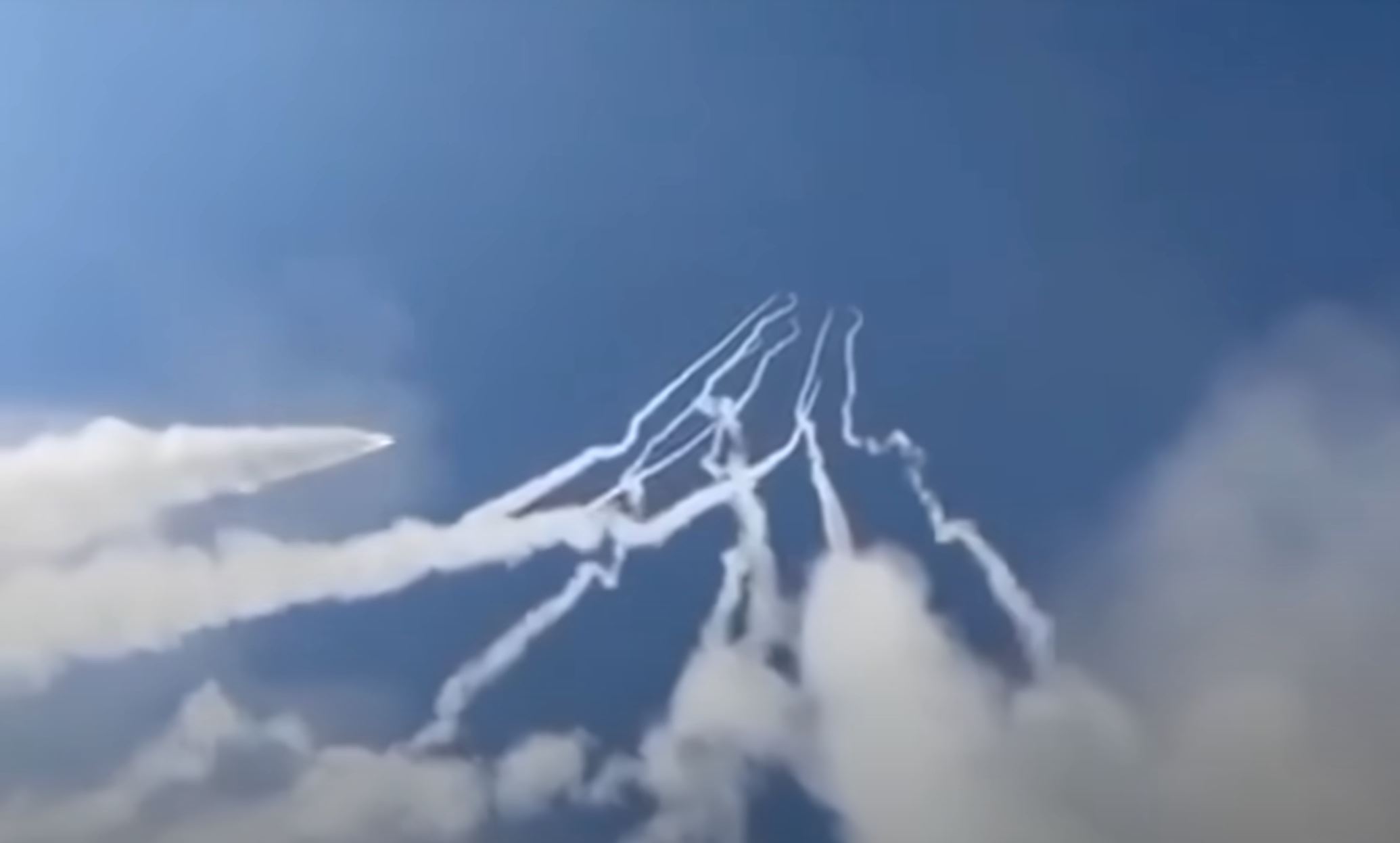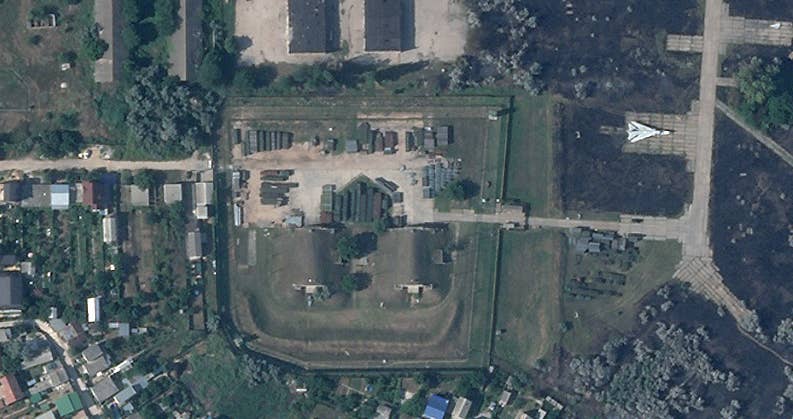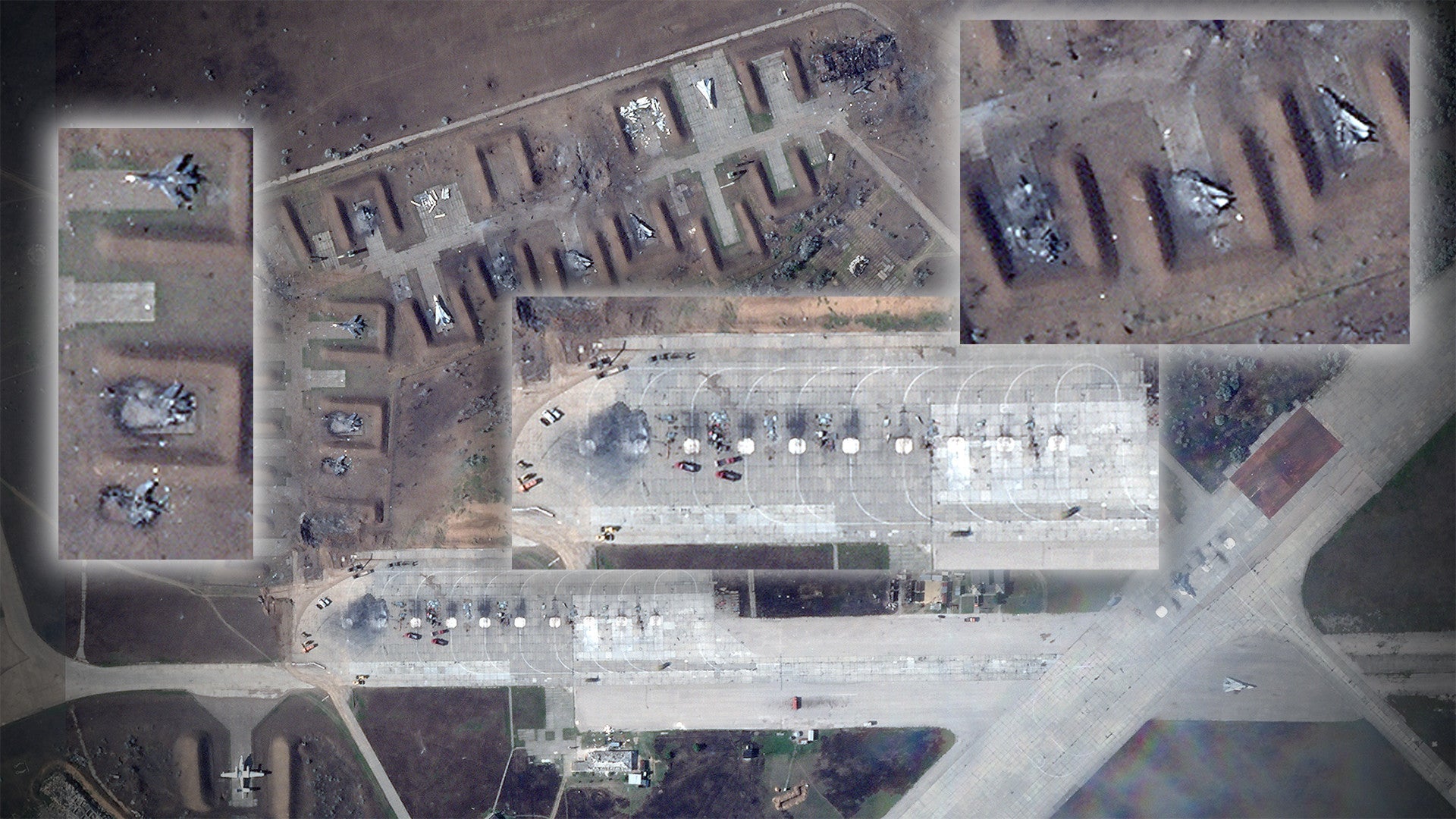Jos se ei toimi siellä niin missä se sitten toimii? Ihmettelen kun niillä kuitenkin oli niin paljon video materiaalia ammunnoista ja testeistä, että jokin piti olla totta, mutta niin Syyriassa kuin Ukrainassa joku on aina paskonut. Myös Syyrian keskusteluissa oli että niiden operaattorit hoitaa asioita, ja kun ne ei ole ollut mukana niin esim pantsir kärsi tappioita, kuten myös S-300-xxx. Onko kaikki niin korruption syömää vai toimiiko niiden vehkeet?Eikös ne silloin myöntäisi että niiden ilmapuolustus ei toimi ollenkaan?
Install the app
How to install the app on iOS
Follow along with the video below to see how to install our site as a web app on your home screen.
Note: This feature may not be available in some browsers.
You are using an out of date browser. It may not display this or other websites correctly.
You should upgrade or use an alternative browser.
You should upgrade or use an alternative browser.
Ukrainan konflikti/sota
ddude
Eversti
Niin ja kannattaa muistaa että osa Venäjänkin propagandaa levittävistä tileistä voi olla 80% ihan legittiä infoa, jotta saadaan ihmiset uskomaan siihen lähteeseen.Tältä twitteröijältä tullu aika tavalla kuumia huhuja jotka joille ei löydy vahvistusta tai osoittautuneet väärennöksiksi.
edit En edes muista että olisi "huteihinsa" kommentoinut että tämä ei pitänytkään paikkaansa tai poistanut. Eli aika kyseenalainen lähde twitterissä
Se 20% joka on sitten propagandaa saattaa mennä sitten paremmin "lävitse"
AMC
Ylipäällikkö
Kiovan haamun serkkupoika venäjältä.Artjem perkule!?
AMC
Ylipäällikkö
Villi veikkaus, että Ukrainasta tulee myös NATON ja EU:n jäsen.Ukrainalla jo perinteisesti ollut huomattavan paljon aseteollisuutta..Se oli aikoinaan eräs suurimmista aseiden valmistajista Neuvostoliiton alueella. Monenlainen aseisiin ja niihin liittyvä valmistus on jatkunut koko Ukrainan itsenäisyyden ajan.
Ei olisi minkäänlainen yllätys jos Ukrainan omaa asetuotantoa olisi lisätty sodan johdosta. Tähän Ukraina kykenee ihan omin voimin. Eikä toisaalta ole syytä epäillä etteikö yhteyksiä olisi niin jenkkeihin kuin muihinkin länsimaisia komponentteja valmistaviin toimittajiin.
Vahvan osaamisen johdosta voisin veikata että Ukrainasta tulee jatkossa eräs maailman suurimmista asevalmistajista..Varmasti myös yhteistyössä (esim. alihankkijana, lisenssivalmistajana) niin amerikkalaisille kuin eurooppalaisille alan yrityksille. Asiakkaita varmasti riittää..
John Hilly
Respected Leader
Tämä oi olla jo täällä, mutta hyvä juttu silti.


Professori: Ukrainalla on täysi oikeus iskeä Venäjän alueelle | Verkkouutiset
Kreml pyrkii kiistämään naapurimaansa oikeuden sotilaalliseen itsepuolustukseen.
www.verkkouutiset.fi
Tuo on muuten semmonen kuuma peruna että kun ryssä tuommoisia mennyt sanomaan, niin jos ukraina hyökkäisikin krimille jollakin väkevällä ja venäjä avoimesti myöntäisi että näin teki, niin siinä olisi pakko julistaa että kyse ei ole enää operaatiosta vaan sodasta, ja tällöin ryssän olisi pakko pistää sodanajan mobilisaatio käyntiin mitä he hamaan tappiin yrittävät välttää koska siitä seuraisi yhteiskunnallisesti niin suuret ongelmat, että valtaeliitin asema olisi uhattuna. Mikäli ukraina ei myönnä mitään, niin se antaa mahdollisuuden venäjälle päätyä mihin lopputulokseen se nykyisille vallanpitäjille paremmin sopii. Samalla bluffin katsoessa nähdään mitä vastaavanlaiset tilanteet toisivat seuraumuksina....Uhkasivat myös aiemmin että isku Krimille on isku Venäjälle ja toimet sen mukaiset. Sen verran kuitenkin jänskättää että helpommalla pääsee kun laittaa omaksi syyksi niin ei tarvi tehdä mitään?...
Myös Ukraina tämän tietää ja tämä lopputulos olisi myös Ukrainan näkökulmasta riski, mutta tietävät että ryssän valtaeliitti pelkää tätä tulemaa enemmän. Kovat ovat panokset ja tässä katsotaan kuka bluffaa ja ketä.
Anna henkilölle joka ei halua sotimaan ase ja pakota hänet rintamalle kaukana valtakeskuksesta - vallanpitäjät ovat turvassa.
Anna henkilölle joka ei halua sotimaan ase ja pakota hänet rintamalle, kauttakulku valtakeskuksen läpi - vallanpitäjät ovat vaarassa.
Kannattaa käydä lukemassa Kamil Galeevin kirjoitus aiheesta, noin vajaa tunnin pitkä luku jos oikein muistan.
Leaderwolf
Respected Leader
Peeveen kannattaisi tehdä erittäin läheistä yhteistyötä Ukrainan peeveen kanssa. Koska tällä hetkellä Ukrainalla on absoluuttisesti paras tieto siitä miten sotia Venäjää vastaan, mitä ne touhuaa, miten niiden laitteet toimii, mikä niihin puree, mitä kannattaa pelätä, mitä tehdä missäkin jne.
Panssari Salama
Respected Leader
Eiköhän nyt kun Nato-ovien salat ovat auenneet niin päästä tähänkin tietoon käsiksi. Systemaattisesti, jopa.Peeveen kannattaisi tehdä erittäin läheistä yhteistyötä Ukrainan peeveen kanssa. Koska tällä hetkellä Ukrainalla on absoluuttisesti paras tieto siitä miten sotia Venäjää vastaan, mitä ne touhuaa, miten niiden laitteet toimii, mikä niihin puree, mitä kannattaa pelätä, mitä tehdä missäkin jne.
AMC
Ylipäällikkö
Täysin samaa mieltä!Minun mielestäni ei mitään pidä kertoa. Ei sitten vittu mitään. Oli iskut sitten millä tahansa trotyylillä tai puikoilla tehty tai sitten miehet pimeydestä iskevät. Ei mitään infoa mistään. Ei kyvykkyyksistä, ei aseista, ei -sitten- mistään. Ne tietää joiden tarvitsee tietää. Muiden ei tarvitse tietää eikä pidä tietää.
Saa pääpiru pytyllä äkistellessä miettiä kylmä rinki persiissä mihin seuraava nöyryytys tulee. Samoin pienemmän nilkit samalla lailla hermoilla, kunnes luontainen poisto korjaa pumpun pettäessä tai hermojen mennessä.
Täydellinen radiohiljaisuus, pelkkiä iskuja vaan. Koko sota näin loppuun saakka. Ja jos ydinnappia meinaa painella niin vastine on sitten annettava.
Mitäs läksivät kusipäät.
strelailija
Majuri
Tuo EU-jäsenyys voi olla vähän pitempi projekti...Villi veikkaus, että Ukrainasta tulee myös NATON ja EU:n jäsen.
AMC
Ylipäällikkö
Ei tällä ole mitään vaikutusta, ryssä voi sanoa ihan mitä se haluaa.saavat näillä lopettamaan iskut. Kertovat julkisesti että näissä tukikohdissa on ydinaseita.
weasel
Kapteeni
Viro estää venäläisten maahantulon. Ensiksi Viron myöntämien viisumien osalta ja selvittää mahdollisuuksia kieltää muidenkin Schengen-alueen maiden myöntämät.

 news.err.ee
news.err.ee

Estonia bars entry to Russian citizens with Estonian-issued visas
Estonia will ban Russians with Estonian-issued Schengen visas from entering the country, the government announced on Thursday (August 11). The rule does not affect permanent residents and will enter into effect on August 18.
Raveni
Greatest Leader
Itse olen ihmetellyt, että miksi Ukraina ei hae mm. pohjoisessa jossa Venäjä joutui vetäytymään edullisempia puolustusasemia tunkeutuen mm. Venäjälle. Tuo pakottaisi Venäjän siirtämään joukkojaan jotka nyt voivat uhata Ukrainaa idässä ja etelässä.Tämä oi olla jo täällä, mutta hyvä juttu silti.

Professori: Ukrainalla on täysi oikeus iskeä Venäjän alueelle | Verkkouutiset
Kreml pyrkii kiistämään naapurimaansa oikeuden sotilaalliseen itsepuolustukseen.www.verkkouutiset.fi
AMC
Ylipäällikkö
Sattuu näitä selittämättömiä tulipaloja paremmissakin piireissä...  [/offtopic]
[/offtopic]

 www.esaimaa.fi
www.esaimaa.fi
 [/offtopic]
[/offtopic]
Taipalsaaren ampuma-alueella paloi puoli hehtaaria maastoa – Sammutustyöt kestivät yhteen asti yöllä
Taipalsaaren ampuma-alueella paloi maastoa keskiviikkona noin puolen hehtaarin alueella.
AMC
Ylipäällikkö

miksi igor ei käynyt tupakilla täällä?
War Zone has now obtained satellite imagery from Planet Labs of Russia's Saki Air Base on the occupied Crimean Peninsula in the aftermath of the still largely-unexplained explosions there yesterday. Aircraft look to have been the hardest hit and specifically targeted, with at least 10 jets seen seriously damaged or destroyed. There is also visible damage to a number of aircraft revetments and other structures, but key infrastructure appears to be unscathed. Uncertainty continues to surround the exact circumstance behind what happened at the base yesterday, as you can read about in detail in The War Zone's prior reporting here.
What is clear from the satellite imagery is that Saki Air Base suffered major damage as a result of whatever happened. The bulk of the damage seems to have occurred at and around a large apron at the southwestern end of the base and a nearby array of aircraft revetments.

Widespread Destruction Seen After Blasts At Russian Base In Crimea
What happened at Saki Air Base remains murky, but satellite images show multiple damaged or destroyed aircraft and structures, and craters.
Still, unless the munitions were substantial, this would not necessarily explain the clear presence of the large craters. There continues to be a discussion about whether Ukrainian forces may have utilized a stand-off strike capability that they were not previously known to have, including a potential small stockpile of domestically-produced short-range ballistic missiles.
Regardless, it seems somewhat unlikely that the damage we're seeing was inflicted during some kind of special operations ground raid – the fact that it happened during the day makes that even less plausible. The craters, especially, are not what you would expect to see from explosive charges emplaced by teams on the ground.
If Saki Air Base was indeed subjected to some kind of air or missile strike, it would underscore a very clear decision by the Russian military to not take more proactive steps to shelter combat jets at this location. This is despite Russia's extensive knowledge of the threat posed by attacks involving small drones after years of fighting in Syria, especially with regards to its Khmeimim Air Base outpost in that country, which led to the construction of a row of more protected shelters there.
No matter what, the Russian Navy's 43rd Independent Naval Attack Aviation Regiment appears to have suffered significant losses, which will have some impact on its ability to contribute to the ongoing fighting in Ukraine. This episode can only be highly embarrassing for Russia whether or not it was the result of an accident, as authorities in the country have insisted and now seems all but impossible, or enemy action that managed to penetrate past the extensive defenses it has arrayed on the Peninsula.
Viimeksi muokattu:
Humppaveikko22
Luutnantti
Peeveen kannattaisi tehdä erittäin läheistä yhteistyötä Ukrainan peeveen kanssa. Koska tällä hetkellä Ukrainalla on absoluuttisesti paras tieto siitä miten sotia Venäjää vastaan, mitä ne touhuaa, miten niiden laitteet toimii, mikä niihin puree, mitä kannattaa pelätä, mitä tehdä missäkin jne.
Kun tästä sotkusta selvitään, niin minusta EU/NATO voisi tehdä Ukrainan kanssa diilin jonkilaisesta palkka armejasta, jota ylläpidettäisiin Eu:n/naton varoin ja käytettäisiin siellä missä ryssä näyttäisi olevan tulossa rajan väärälle puolelle.
Tuon kovempaa nopeantoiminnan joukkoa tuskin voisi olla. Löytyy taistelukokemusta, löytyy paras koulutus ja parhaat aseet. Toiminnan tarkoitus on yksinomaan ryssän sotilaallisen uhan torjuminen ja joka miehellä on jäänyt jotain "hampaan koloon" ryssää vastaan. Eli motivaation pitäisi olla kohdillaan.
Tuo joukko kävisi harjoittelemassa ympäri Eurooppaa itärajan tuntumassa ja tekisi tiivistä yhteistyötä naton joukkojen kanssa..
Joukoissa palvelleet voisivat sitten jollain rotaatiolla siirtyä takaisin Ukrainan armejan palvelukseen luomaan upseerin uraa..
Voisiko parempaa kuviota sekä lyhyellä että pitkällä tähtäimellä olla.


